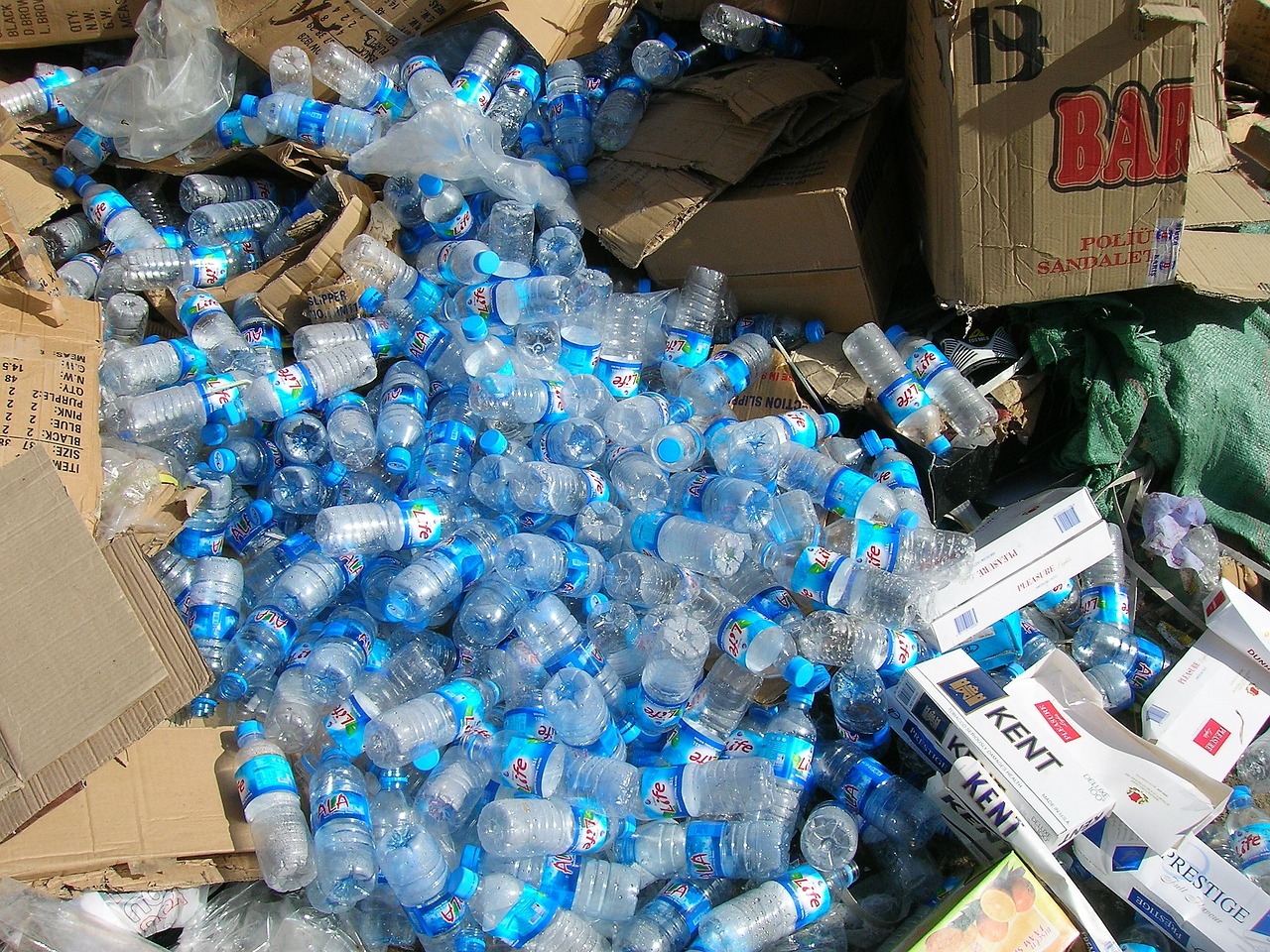Five ways plastic packaging can be better recycled
The unpalatable fact is the UK still produces too much waste, and we don’t recycle enough of it. Currently in the UK, we’re falling short of our 2050 target to prepare 65% of municipal waste for re-use and recycling, and plastic packaging is an important part of this story. As of 2021, the UK has a recovery/recycling rate of 44% for plastic packaging, while materials such as aluminium (75%) and paper and cardboard (70%) are much higher.
It is easy to point at plastic packaging to say the material is a problem, to get caught up in the good-bad debate that has been polarising public opinion and media commentary. In reality, when items are made from reusable and recyclable plastics and managed correctly, they provide us with sustainable, cost-efficient, and durable packaging solutions.
At Biffa, we see the whole plastics picture. From guiding brands in their packaging choices to collecting, sorting and processing of millions of tonnes of plastic from households and businesses for recycling. Every year we recycle 151kt of plastic at our leading recycling facilities, transforming waste into material which is used to make new products.
Here are five ways plastic packaging can be better recycled to build a positive future for plastic:
1. Use more recyclable plastics
WRAP’s 2022 update to its annual recycling tracker shows that 90% of UK citizens regularly recycle when asked about all types of materials. However, the recovery rate of plastic packaging is 44% because much of it (for example, flexible plastics or pouches) is not recyclable or reusable. While recycling is part of the nation’s day-to-day activities – and the motivation and behaviour are clear – the packaging used for many products does not support recycling.
What can be done about this? People and businesses need information to guide and support their choices. From businesses’ product design and packaging decisions to consumers’ purchase choices, understanding is needed at every stage of production and purchase. If people know more about the different types of plastic and the environmental and economic impact of their choices, a change in behaviour could be more likely, all the while increasing the quality of recyclable material by creating separate waste streams.
2. More capacity and infrastructure
When recyclable plastic packaging leaves the UK, the carbon cost of transportation leads to more emissions compared to on-shore recycling. There’s a clear argument for more plastic to be recycled in the UK; to support green investment, infrastructure, economic growth and jobs.
An end to the export of plastic packaging would mean the UK must recycle the 0.7mtpa of plastic packaging waste a year currently exported. This would take at least 12 polymer plants with a minimum 55,000-tonne processing capacity. Biffa’s 57,000te capacity recycling plant in Seahambrought 100 full-time jobs to the local region. Investment in infrastructure benefits both the economy and local communities in addition to the environment.
Although the Government has reiterated its commitment to banning export of plastic waste to non-OECD countries there is still more we can do to keep plastic within the UK circular economy and encourage packaging producers to use more recyclable material.
The Deposit Return Scheme in Scotland, launching August 16th 2023, is an example of how bold legislation can drive investment in and improvements to recycling infrastructure. As the logistics provider for the Scottish scheme, Biffa is developing new facilities to handle increased volumes of materials. The consultation for England, Northern Ireland and Wales is now complete, with the launch date set for 1st October 2025.
3. Reduce contamination
Last year, Biffa highlighted that nearly a fifth of all recycling is lost due to contamination. Food contamination on or inside packaging is one of the major issues hindering our recycling efforts, but it doesn’t have to be this way. Increased awareness around the recycling process and the impact of contamination will help change behaviour for consumers and businesses.
There are plans for legislation to make the current voluntary, on-package labelling system mandatory. This needs to be realised for both consumer and business packaging, with the clearest messaging possible, to drive awareness of what the recycling symbols mean and the condition a container needs to be in to be recycled. This will reduce the amount of unrecyclable material in the UK collection and processing systems, improve the quality of our recycled materials and lower the carbon emissions output.
Our industry, regulatory bodies and government need a greater understanding of the packaging materials in circulation. Extended Producer Responsibility begins this year, obligating more businesses to report in greater detail on the packaging they produce and in what quantity. This will provide valuable insight to support customer choice and promote better packaging design for recycling.
4. Replace single-use plastic
The government recently announced its intention to ban certain single-use plastics, including plates and cutlery. While this is a welcome step in the right direction, the plastics themselves are not the problem; it’s that they are single-use. As single-use plastics are phased out, they need to be replaced by more multi-use or reusable options.
From bamboo cutlery to plant-based plastic alternatives, any material in a single-use and on-the-go context presents a unique challenge. For example, it doesn’t matter if something is compostable if it ends up in general waste or if non-recyclable materials are put in the recycling bin. It all results in resources being lost and emissions being created.
Even if a material is identified as compostable, that can mean it is only industrially compostable, so it is not suitable to be processed with end-of-life food in anaerobic digestion or biodegraded in a domestic compost setting or green waste collections. This means it requires specialist collection and processing.
The ban on single-use plastics will help increase the use of readily recyclable packaging solutions, however it’s just one piece of the puzzle that will help the UK circular economy.
5. Simplify packaging
Brands are operating in highly competitive markets, working with tight margins. Packaging needs to be easy to fill, protect the contents and catch the eye of consumers in a split second in saturated environments. Often this leads to choices in colour and materials that render the container unrecyclable. It doesn’t have to be one or the other; it is possible to create sustainable plastic packaging that speaks to the consumer.
Commonality and consistency are key to creating simple, sustainable packaging. If materials or different types of plastic are mixed, it becomes harder to separate the materials and recycle them. Packaging such as laminated material, plastic wrapping and big sleeves need to be separated or recycled at specialist facilities; this is often impractical and unsustainable at scale.
This is also true of packaging that contains more than one colour of plastic. No food-grade coloured plastic can be recycled back into natural-coloured food-grade packaging as the pigment remains in the polymer. When mixed pigments are recycled together, the material becomes grey. Adopting clear plastic wherever possible will help move towards more sustainable packaging. Improvements can also be made by shrink-wrapping labels rather than gluing and tethering bottle tops to bottles (ideally the same colour).
Will plastic packaging lose its edge if it is clear, homogenous, and consistent?
Most likely not. Eye-catching design can still be used, provided the components are easily removed and recyclable. Increasing public awareness will support positive changes in consumer behaviour. People want to do the right thing, and those brands which explore sustainable options first will catch the eco-conscious eye and achieve cut-through – the time to start is right now.
At Biffa, we support some of the UK’s leading brands through this process. Our Blueprint for Waste Net Zero outlines the role of recyclable plastic packaging within the future carbon hierarchy and what further changes are needed to deliver a truly circular economy.
By Roger Wright, Waste Strategy & Packaging Manager at leading sustainable waste management company Biffa

